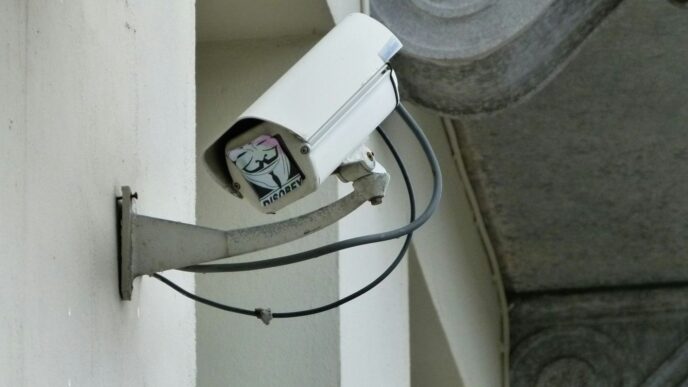This article looks at some recent cybersecurity stories reported by Krebs on Security. We’ll break down what happened in a few big cases, like the Wipro breach and the Snowflake incident. We’ll also talk about how cybercriminals are changing their methods and what companies can learn from these events. It’s a lot to unpack, but understanding these incidents helps us all get better at staying safe online.
Key Takeaways
- The Wipro breach showed how important it is for companies to be upfront and honest when something goes wrong. Their initial responses were seen as not very helpful.
- Cyberespionage tools are getting more complex, and attackers are using targeted emails, called spear phishing, to get them into systems.
- The Snowflake incident highlights how bad things can happen when basic security like passwords and access controls aren’t set up right, and how attackers can use that to extort money.
- Understanding how ransomware groups operate helps security folks track them and figure out how to stop them. It’s like building a profile for each group.
- Companies need to think about who is responsible for security, especially in the cloud. It’s not just the cloud provider’s job; users have a role too.
Unpacking the Wipro Breach: A Krebs on Security Deep Dive

This whole Wipro situation, as reported by Krebs on Security, really highlights how companies can stumble when dealing with a data breach. It started with reports that Wipro, a big IT outsourcing firm for many US companies, had its systems compromised. The word on the street was that attackers were using Wipro’s own networks to hit their clients.
Initial Reporting and Wipro’s Response
When KrebsOnSecurity first reached out to Wipro for comment, they took several days to respond. The statement they eventually provided didn’t really address the core concerns raised by sources, and it didn’t even admit there was a security incident. It wasn’t until hours after the initial story broke that Wipro acknowledged a "phishing incident" in an Indian newspaper, claiming their systems detected it and they’d hired an outside firm. This initial response felt like a classic case of a company trying to downplay a serious issue.
The Phishing Campaign and Exploitation
Digging deeper, the investigation revealed that the attackers started with a phishing attack on March 11th, catching just one employee. This was followed by a larger campaign between March 16th and 19th, which snagged 22 more employees. The attackers then used a legitimate remote access tool called ScreenConnect, installed on over 100 Wipro systems, to hop into client networks. They also used Mimikatz, a tool that can steal passwords from computer memory. It seems the main goal was quick cash, with one report mentioning gift card fraud at a Wipro customer’s stores. This is a stark reminder of how even basic phishing can lead to significant network compromise.
Indicators of Compromise and Customer Impact
What’s particularly concerning is how Wipro handled the sharing of information with its clients. The indicators of compromise (IoCs) that Wipro sent out to customers were actually gathered by one of Wipro’s own partners who was targeted. Wipro presented these IoCs as if their own security team had discovered them. One major US company, a Wipro partner, even cut off online access to Wipro employees within days of realizing their operations were being targeted. This lack of openness and the misrepresentation of information sources really put customers in a tough spot, making them question the integrity of Wipro’s security practices. For more on daily cybersecurity news, check out CyberWire Daily.
Cyberespionage Malware Networks Evolve
Scope and Complexity of Espionage Tools
It’s getting pretty wild out there. Security folks are noticing that the malware designed specifically for spying on governments, activists, and important business people is becoming just as complex and widespread as the stuff used by regular cybercriminals. We’re talking about custom-made malware, with researchers tracking over 200 different types. On top of that, there are about 1,000 website addresses that these spies are using to control their malware or to send out those super targeted "spear phishing" emails. It’s a huge operation, really.
Targeting Governments, Activists, and Executives
These aren’t random attacks. The malware is being used to go after specific targets. Think government agencies, people who are outspoken about certain issues, and high-level executives in companies. The goal is usually to steal sensitive information, and the methods are getting more sophisticated all the time. It’s not just about getting into a system; it’s about doing it quietly and staying there for a while.
The Role of Spear Phishing in Espionage
Spear phishing is a big part of how these espionage tools spread. Instead of sending out mass emails hoping someone clicks, these are highly personalized messages. They might look like they’re from a colleague, a known contact, or a trusted service. The aim is to trick the recipient into downloading a malicious file or clicking a bad link, which then installs the spying malware. This targeted approach makes them much more effective than generic phishing attempts. It requires more effort from the attackers, sure, but the payoff in terms of stolen data can be massive.
Snowflake 2024 Incident: A Case Study
This incident involving Snowflake in 2024 really highlights how sophisticated cyberattacks have become. We’re talking about a group called UNC5537, who were apparently after money. They managed to get their hands on a lot of customer data from Snowflake accounts. It’s pretty wild to think about how they did it.
Advanced Persistent Threats and IAM Failures
UNC5537, sometimes going by names like "Judische" or "Waifu," used stolen login details. These credentials were likely nabbed through infostealer malware, which is a common way attackers get initial access. Once inside, they could access customer data stored on Snowflake. The real kicker here is that a lack of basic security measures, especially around Identity and Access Management (IAM), made this possible. Think about it: if you don’t have strong passwords, or multi-factor authentication, or even just regularly changing your access keys, it’s like leaving your front door wide open.
The Threat Actor UNC5537 and Extortion Tactics
This group didn’t just steal data; they used it to extort companies. Reports suggest they made upwards of $2 million USD from these tactics. It’s a nasty business model. They’d get the data, then demand payment from the affected organizations to keep it quiet or prevent it from being leaked. This kind of extortion can cause huge problems for businesses, not just financially but also in terms of their reputation.
Impact on Major Organizations and Customer Data
We’re not talking about small, unknown companies here. Big names like AT&T, Ticketmaster, and Santander were reportedly affected. This means sensitive customer information from these well-known brands was potentially exposed. The consequences can be far-reaching:
- Confidentiality: Customer data, trade secrets, and other private information could be accessed and possibly leaked.
- Financial: Companies faced direct costs from paying ransoms, hiring incident response teams, and dealing with the fallout. Some reported non-material financial consequences up to $3 million USD.
- Reputational: Being associated with a major data breach can seriously damage customer trust and market confidence. It makes people think twice about doing business with you.
This whole situation really underscores the need for robust security practices, especially in cloud environments. It’s not just about having the technology; it’s about using it correctly and consistently.
Analyzing Ransomware Group Tactics
Ransomware groups aren’t just random hackers; they’ve become sophisticated operations. We’re seeing them act more like businesses, complete with branding and structured leadership. It’s a scary thought, but understanding how they work is key to fighting back.
Cataloging and Tracking Malware Deployments
It’s a tough job, but someone’s got to keep tabs on all the different ransomware out there. Researchers are spending a lot of time just figuring out what’s new and what these groups are using. They’re tracking custom malware, which is getting pretty complex, and the networks used to control it. Think of it like keeping a detailed log of every tool a criminal organization uses.
Developing a Framework for Ransomware Profiling
To make sense of it all, folks are trying to build better ways to profile these groups. It’s not just about the malware itself, but also about their origins, how they’re organized, and what motivates them. This helps us see patterns and predict their next moves. Some groups, for instance, are known for hitting specific industries, while others are more opportunistic.
Insights for the Security Research Community
What we’re learning is that these groups often share common traits. Many have roots in Russia, operate with a business-like approach, and focus heavily on building their ‘brand’ in the cybercrime world. They also tend to use a ransomware-as-a-service model, meaning they rent out their tools to others. This business-like structure makes them harder to disrupt than a lone wolf hacker.
Here are some common tactics observed:
- Multi-level Extortion: It’s not just about encrypting your data anymore. They’ll steal it first and threaten to leak it if you don’t pay, adding another layer of pressure.
- Affiliate Networks: Ransomware-as-a-service means they have partners who actually carry out the attacks, making it harder to trace back to the core group.
- Targeting Critical Infrastructure: We’re seeing attacks on hospitals, banks, and other essential services, which ups the stakes considerably.
Key Takeaways from Recent Security Incidents
Looking back at the recent security events, a few things really stand out. It seems like the basics are still the biggest hurdle for a lot of organizations. We’re talking about things like making sure systems are set up correctly from the start and controlling who can access what. These aren’t new ideas, but they keep popping up as weak spots in major breaches.
Dominance of Baseline Configuration and Access Controls
It’s almost a broken record at this point, but proper baseline configurations and strong access controls remain the first line of defense. When these are weak or missing, it opens the door wide open for attackers. Think of it like leaving your house unlocked; it’s just an invitation. We saw this play out in several incidents where attackers exploited simple misconfigurations or gained access through overly permissive accounts. Getting these foundational elements right is just non-negotiable.
Understanding the Shared Responsibility Model in Cloud Security
Cloud security is a team sport, and the ‘shared responsibility model’ is the playbook. Organizations using cloud services need to really grasp what parts of security are theirs to manage. It’s not enough to just hand data over to a cloud provider and assume it’s all taken care of. You’ve got to actively protect the sensitive information you put there. This means understanding your role in securing your data, applications, and access within the cloud environment. It’s a partnership, and both sides have jobs to do. For instance, understanding how to protect against botnet attacks like the Aisuru botnet is crucial.
Vendor Responsibilities for Secure Defaults
On the flip side, the companies providing cloud services have a big role to play too. They need to make it as easy as possible for customers to be secure. This means offering secure default settings and making the ‘safe’ option the path of least resistance. When vendors prioritize security in their service design, it significantly reduces the chances of accidental misconfigurations by customers. It’s about building security in from the ground up, not as an afterthought. If a vendor can provide secure defaults, it helps everyone out.
Examining Corporate Responses to Breaches
When a company gets hit with a data breach, how they handle it afterward really matters. It’s not just about fixing the technical mess; it’s about how they talk to their customers, regulators, and the public. We’ve seen some pretty different approaches lately, and frankly, some of them leave a lot to be desired.
The Importance of Openness and Transparency
Look, nobody expects a company to have all the answers the second a breach happens. Investigations take time. But what is expected is honesty. When KrebsOnSecurity reported on the Wipro breach, the company’s initial response was pretty vague. They didn’t really acknowledge the severity of the situation, which, let’s be honest, isn’t a great look. Being upfront, even when the news is bad, builds trust. Customers and partners need to know what happened, what data might be affected, and what steps are being taken. Sharing indicators of compromise (IoCs), even if they come from partners, is a good start, though ideally, the affected company would provide them directly. It shows they’re taking the threat seriously and helping others protect themselves.
Critique of Tone-Deaf Corporate Communications
Sometimes, companies seem to forget that people are involved. We’ve seen statements that sound like they were written by lawyers trying to avoid blame, rather than by people trying to reassure worried customers. For instance, after the Snowflake incident, while Snowflake did eventually inform customers and regulators, the initial public perception was that the company was slow to react and perhaps downplayed the issue. This kind of communication can really damage a company’s reputation. It’s like trying to fix a leaky faucet by ignoring the dripping sound. You can’t just sweep it under the rug. Acknowledging the problem, showing empathy for those affected, and clearly outlining the remediation steps are key. It’s about managing the human element of a technical disaster.
Legal and Regulatory Considerations in Breach Notification
Beyond just public perception, there are real legal and regulatory hoops to jump through. Depending on where a company operates and where its customers are, different laws dictate how and when a breach must be reported. For example, GDPR in Europe and various state laws in the US have specific requirements. Failing to meet these can result in hefty fines. The Snowflake incident, for instance, led to regulatory filings like 8-K forms with the SEC, detailing the breach and its impacts. Companies need robust processes in place to handle these notifications correctly and on time. This includes understanding supply chain risks, as a breach in a vendor’s system can trigger notification obligations for the client company. It’s a complex web, and getting it wrong can be costly, both financially and reputationally. You can find more details on cybercriminal extortion campaigns that highlight the financial motivations behind many of these incidents.
Wrapping Up
So, what’s the takeaway from all this? It seems like when things go wrong with security, some companies just don’t handle it well. The Wipro situation, for example, showed how a company might not be totally upfront about a breach, which is pretty concerning if you’re a customer. It really highlights how important it is for businesses to be open and honest when something bad happens. Plus, it’s a good reminder that basic security stuff, like keeping track of who has access to what, is still super important. We’ll have to keep an eye on how these situations play out and what companies learn from them.
Frequently Asked Questions
What was the Wipro breach, and how did Krebs on Security report on it?
The Wipro breach involved hackers getting into Wipro’s computer systems, which are used to help many big companies. Krebs on Security was one of the first to report on this, based on information from sources. Wipro’s response to the news was criticized for not being open enough at first.
How do cyberespionage malware networks work?
These are complex systems used by spies to steal information. They use special computer programs (malware) and highly targeted emails, often called ‘spear phishing,’ to trick people into giving up information or letting the spies into their systems. They often go after governments, activists, and important business people.
What happened in the Snowflake 2024 incident?
In this case, hackers used stolen login details to get into Snowflake customer accounts. They then demanded money from these companies. This shows how important it is to protect your login information and how dangerous it can be if hackers get access to cloud services.
What are ransomware groups trying to achieve?
Ransomware groups are like digital kidnappers. They lock up your computer files with a special code and demand money to unlock them. Security researchers track these groups to understand their methods and help others protect themselves.
What are the most important things to remember about security?
Keeping things simple is key! Making sure computer systems are set up correctly from the start and controlling who can access what are super important. Also, when using cloud services, both the company providing the service and the customer using it have jobs to do to keep things safe.
Why is it important for companies to be open after a security breach?
When a company is open and honest about a security problem, it builds trust. Hiding information or not explaining things clearly can make customers worry more. Being upfront helps everyone learn from mistakes and work together to prevent future problems.














